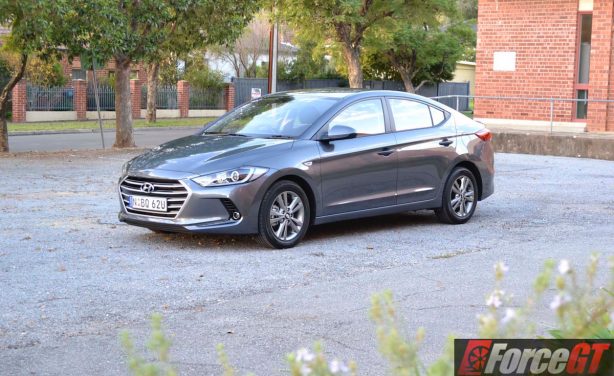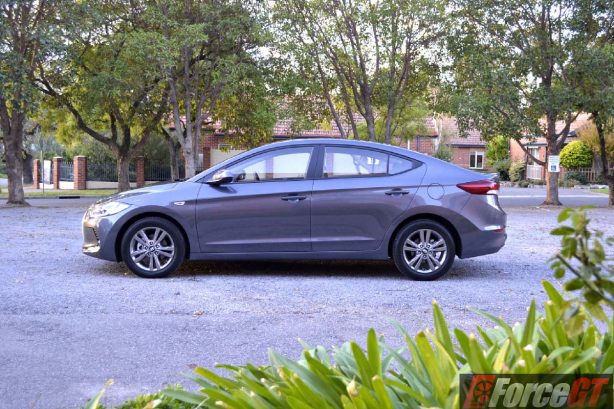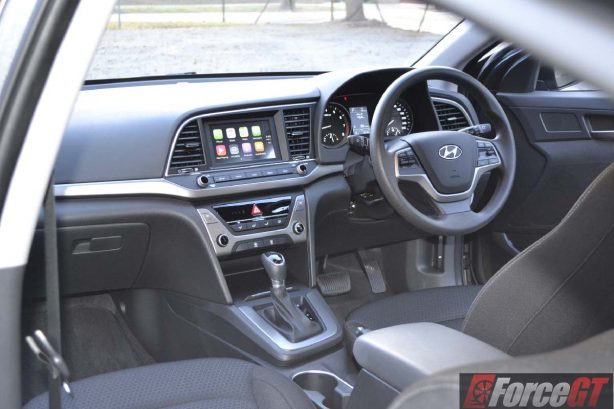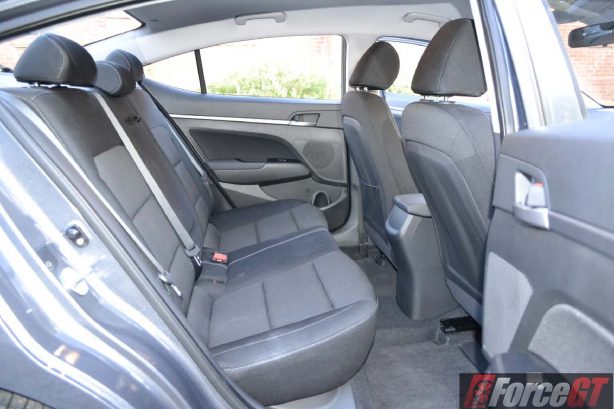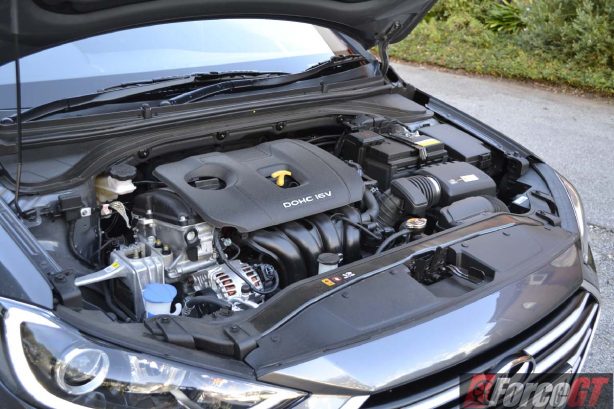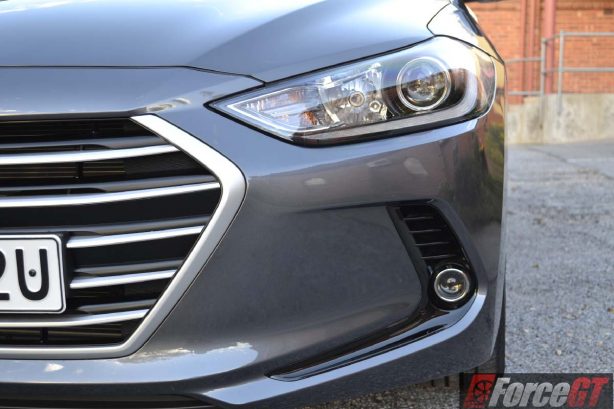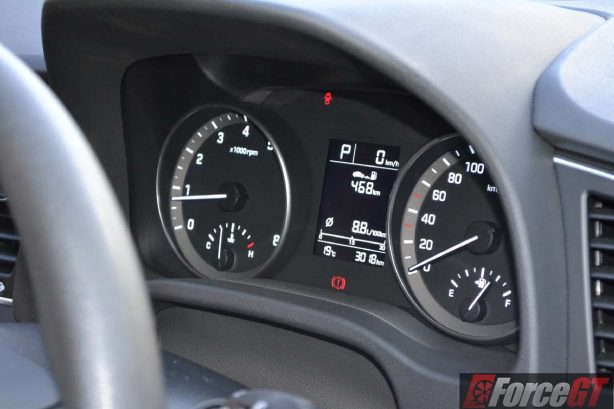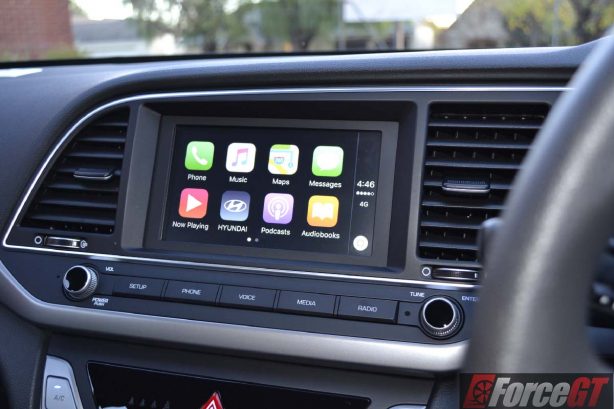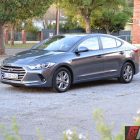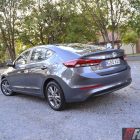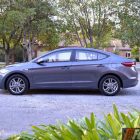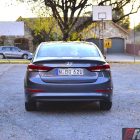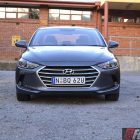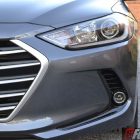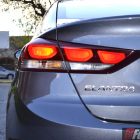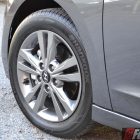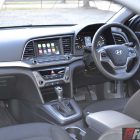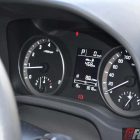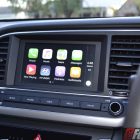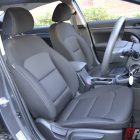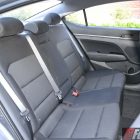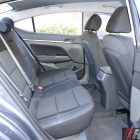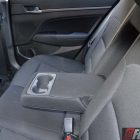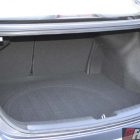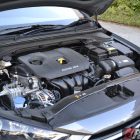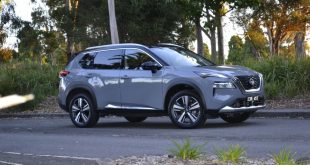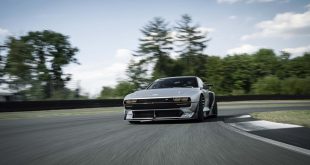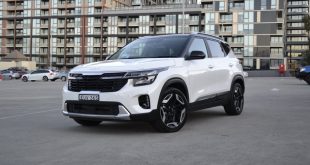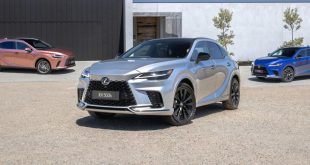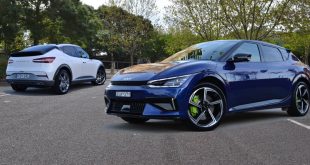Australians’ taste in cars has changed dramatically since the new millennia. Fifteen years ago, our favourite mode of transport was large four-door sedans with no fewer than six cylinders.
Then came the invasion of the Sports Utility Vehicle or SUVs, which single handedly ended the dominants of our local heroes and changed the carscape forever.
What sealed their fate was the high oil prices a few years ago that saw the rise of small family cars and mid- to small-sized SUVs.
The Mazda3 and Toyota Corolla quickly became sales leaders but in the last two years, the Hyundai i30 became a force to be reckoned with, regularly stealing the top spot from the Japanese duo.
When it comes to small cars however, hatch rules. But this six-generation Hyundai Elantra might give you a reason to jump into a sedan instead.
Essentially a booted version of the i30 hatch, the 2016 model is built on an all-new platform shared with the next-generation i30 tipped to arrive mid to late next year.
If the Elantra is any indication, we can expect the all-new i30 hatch to be even sharper and more polished, potentially challenging class best.
But enough of the hatches for now.
For 2016, Hyundai has simplified the Elantra’s lineup with just two variants – Active and Elite.
The Active is priced at $21,490 plus on-road costs – $500 more than the outgoing model, while the Elite comes in at $26,490 plus ORC. A 6-speed automatic is a $2,300 option, which comes as standard on the Elite.
Both models are powered by Hyundai’s naturally aspirated 2.0-litre Nu MPi petrol engine.
So, what’s new? Let’s find out…
Design and Comfort
Hyundai really pushed the envelop on the last-generation Elantra, which heralded a sleek fastback design. The 2016 model is a refinement on that styling. You still get the familiar outline, but all the lines are tighter and the creases deeper.
Its new hexagonal grille – in silver metallic on the entry-level Active tested here, and chromed on the Elite – is flanked by a pair of slimline projector-beam headlights with integrated LED daytime running lights.
At the back, the taillights get posh-looking three-pod light signature first seen on the brand’s premium Genesis sedan, while the steeply raked rear windscreen flows into a pronounced lip on the boot lid.
The new model is also 20mm longer, 25mm wider and 5mm taller than its predecessor.
Inside, there’s 7mm and 12mm more shoulder room front and back, respectively. And despite the sloping roofline, rear headroom is up by 4mm and there is substantially more legroom at the back as well, up by 59mm.
NVH (noise, vibration and harshness) has improved even further, thanks to the Elantra’s front suspension, which brings a new sub-frame with optimised geometry, new bushings and larger bushes on the lower control arm.
More substantial changes have been made to the car’s torsion-beam axle rear suspension setup. While the outgoing Elantra’s dampers were mounted diagonally, the new model features upright, longer dampers and repositioned coil springs.
Coupled with the 16-inch wheels on our Active test car, the ride is pillowy plush while the cabin is peacefully serene at almost any speeds.
The only downside to having the vertically mounted dampers is a smaller boot space, which is down 27 litres to 458 litres, although you get a full sized alloy spare wheel instead of a space saver.
Performance and Handling
Hyundai has replaced the outgoing Elantra’s 1.8-litre MPi engine with the Nu 2.0-litre MPi which produces 112kW at 6,200rpm and 192Nm at 4,000rpm – up from 110kW and 178Nm.
Importantly, peak torque now arrives 700rpm sooner than before, improving the small sedan’s driveability. The engine is mated with either a 6-speed manual, or a 6-speed automatic, as in our test car.
While the transmission dishes up ratios relatively quickly for a torque converter auto, it is slow to kick down when driven enthusiastically. A lack of steering wheel-mounted shift paddles and manual gear controls that are the wrong way around (push up to shift up and pull down to shift down) add to the frustration further.
The new Elantra has undergone extensive local suspension tuning to imbue a local flavour to its handling and we are glad to report the effort has been worthwhile.
Hyundai Australia’s chassis development team carried out 48 drive tests on the car, analyzing 15 different sets of front dampers and 34 sets of rear dampers. The results were then processed by the team’s long-time computer modeling expert and motorsport suspension ‘guru’, David Potter.
The team also tested three different sets of front springs, two different rear springs, two rear torsion beam bushes and two different front stabilizer bars.
The result is confident and composed handling, with excellent grip from the 205/55R16 tyres. The car feels compliant with well-sorted damping and good brake feel.
What lets it down is the inconsistently weighted steering that is slightly numb off centre.
Quality
What impresses most about the Elantra is the high quality feel of the car. Everything feels taut, from the tight panel gaps to the hefty doors. Even the boot lid shut with a nice solid thunk.
Inside, the dashboard’s top surfaces have soft-touch plastics and all controls come with a substantial feel.
It’s a shame then that Hyundai decides to equip the Active with a low-rent plastic steering wheel.
Economy
The 2.0-litre petrol engine in the Elantra will officially return a combined consumption of 7.2L/100km (7.1 for the manual). However, in reality, 8.6L/100km is a closer figure.
With a 50-litre fuel tank, that means a cruising range of approximately 581km.
Equipment and Features
As expected from a Hyundai, standard equipment is generous. Both variants come with six airbags, a full suite of active safety items including electronic stability control, ABS, traction control, hill-start assist control and cruise control.
While rear vision in the Elantra is good, it is backed up by rear parking sensors and a reversing camera.
Its 7-inch touchscreen audio system with 6 speakers sounds decent and comes with MP3 capability, AUX/USB input, Bluetooth and Apple CarPlay, although it misses out on built-in sat-nav.
The Elite model adds better looking 17-inch alloy wheels shod with 225/45R17 tyres, LED taillights, electric folding exterior mirrors, leather-appointed interior, dual-zone climate control air-conditioning, Smart Key with push button start and Smart Boot function and rear seat air vents.
Neither model gets front seat lumbar support and life saving autonomous emergency braking, which is an oversight. We also find the digital speedometer to be too small.
Full pricing and specification here.
Verdict
Design and Comfort: 8.0/10
Performance and Handling: 8.0/10
Quality: 8.5/10
Economy: 7.5/10
Equipment and Features: 8.0/10
Wrapped underneath the all-new 2016 Hyundai Elantra’s balanced proportions and handsome sheet metal is a delightfully capable and well-sorted small sedan.
With a well-appointed interior and excellent built quality, backed up by Hyundai’s generous 5-year warranty, the Elantra is now good enough to challenge the dominance of the Mazda3 and Toyota Corolla sedan.
Pros:
Well-sorted ride and handling
Excellent built quality
Good refinement
Spacious interior
Cons:
Numb steering
No lumbar support
Lacks autonomous emergency braking
| Price (excluding on-roads): | From $21,490 to $26,490 As tested: Elantra Active: $24,285* *includes: · 6-speed automatic: $2,300 · Metallic paint: $495 | |
| Warranty: | 5-years/unlimited kilometre | |
| Warranty Customer Assistance: | 1 year roadside | |
| Country of Origin: | South Korea | |
| Service Intervals: | 12 months/15,000km | |
| Engine: | 2.0-litre Nu four-cylinder, multi-point fuel injected petrol: 112kW @ 6,200rpm, 192Nm @ 4,000rpm | |
| Transmission: | 6-speed manual/6-speed automatic | |
| Drivetrain: | Front-wheel drive | |
| Power to Weight Ratio: | 84.5 | |
| 0-100km/h (seconds): | N/A | |
| Combined Fuel Consumption | Manual | Auto |
| Claimed: 7.1 / Not tested | Claimed: 7.2 / Tested: 8.6 | |
| RON Rating | 91 | |
| Fuel Capacity (L): | 50 | |
| Body: | 4-door sedan, 5 seats | |
| Safety: | 5-star ANCAP, 6 airbags, ESC, TCS, ABS, EBD, VSM, Hill-start Assist, rear-view camera, rear parking sensors, LED DRL, front foglights, full-size alloy spare | |
| Dimensions (L/W/H/W-B) mm: | 4,570/1,800/1,440/2,700 | |
| Kerb Weight (kg): | 1,255 – 1,355 | |
| Entertainment: | 7-inch touchscreen with MP3 capability, 6 speakers, AUX/USB audio input with digital iPod compatibility, Apple CarPlay and Bluetooth | |
Competitors: Ford Focus Sedan, Holden Cruze Sedan, Honda Civic Sedan, Kia Cerato Sedan, Mazda3 Sedan, Nissan Pulsar Sedan, Skoda Octavia Sedan, Toyota Corolla Sedan, Volkswagen Jetta
 ForceGT.com Car News, Car Reviews, Video Reviews, Tuning and much more.
ForceGT.com Car News, Car Reviews, Video Reviews, Tuning and much more. 